Where to buy a home in 2023: top commuter towns from Hampshire and Surrey to Kent and Essex

There was a time when Londoners lured by the sea would head off to Brighton or perhaps Southend. TheKent coast, while lovely, was just that bit too far for a daily commute.
But Kent’s sandy beaches, grammar schools and lovely towns are drawing a new generation of Londoners still WFH for part of the week and willing to live farther from the office.
Another home county packed with commuter-friendly locations isHampshire, which has everything from charming cities to rural villages, although its hotspots tend not to be shoestring budget options.
Essexhas long been a good port of call for those looking for a seaside location but who don’t want to compromise on local amenties. Over the last two years, the county has also found increased favour with Londoners fed up of being locked down in the city.
Another beachy option for the more occasional commuter are practicalisland towns with all the charm and romance of living by the sea and spending downtime messing around on boats, but where you can still be in the centre of London in a couple of hours.
And, although Surrey is the most expensive of the home counties, buyers who are willing to look beyond the classic dormitories can find value on a (comparative) budget.
Here’s our pick of 16 locations for commuter homebuyers.
Where to buy a home in Hampshire
Just over an hour from London and with a choice of charming cities or beautiful villages — Hampshire’s the perfect country escape. But be prepared for top prices.
Petersfield
Average property price: £585,000
Just on the fringes of the South Downs, you won’t go short of open country in this historic Hampshire town, which is great for walkers, runners and cyclists.
In the town centre, the physic garden — a 17th-century herb garden — is a lovely little oasis.
Petersfield is a busy local centre with lots of annual fairs and festivals, it has a resident-run community garden and Petersfield Festival Hall hosts plays and concerts year round.
Winchester
Average property price: £596,000
Set on the river Itchen and beside the South Downs, Winchester has a charming old city centre but it is vibrant and quirky enough to keep Londoners happy.
There are lots of hipster-friendly little cafes, traditional pubs and cocktail and wine bars, so you won’t miss your cafe culture too much. You will also find there are some really excellent independent boutiques to explore.
It’s handy for the south coast, while trains to Waterloo take just over an hour. All but one of Winchester’s schools are rated good or outstanding by Ofsted, which is a lot better odds than you’re likely to find in London.
If you want one of the dreamy period townhouses right in the centre of the city or one of its smart satellite villages like Sparsholt or Micheldever, you are looking at asking prices upwards of £1 million — yes, London prices.
But there are streets of Victorian terraces and semis priced from about £600,000, and a budget of £400,000 to £500,000 would buy a two to three-bedroom terraced cottage in town.
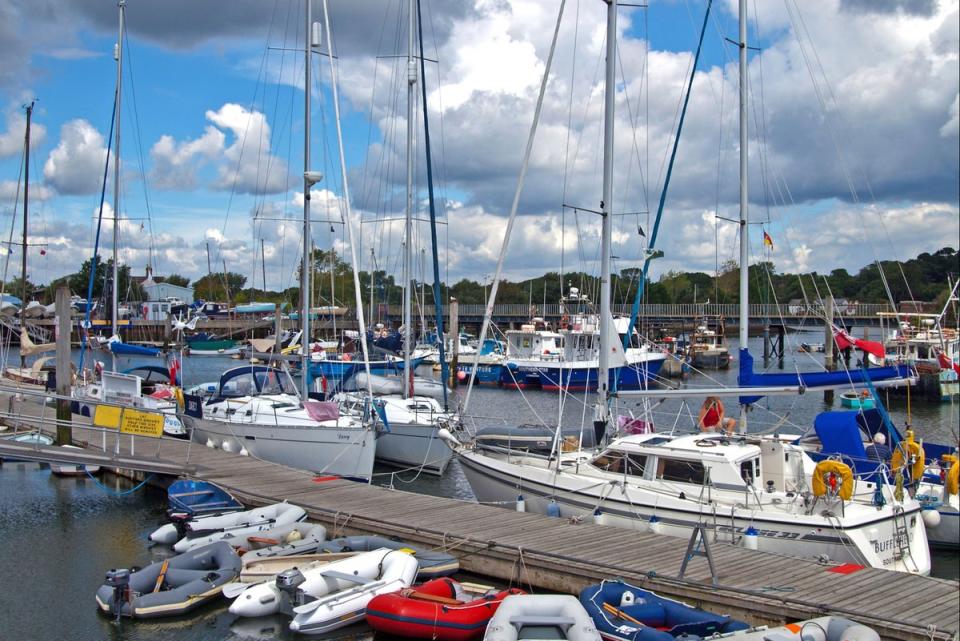
The New Forest
Average property price: £475,000
This 285 square miles of ancient forest sits right on the south coast and is heaven for outdoorsy types. It is perfect for walking, running or letting a horse do the hard work.
Nightlife is fairly low key although one thing the New Forest does very well is country pubs. And things get livelier on the coast, particularly around the yachting town of Lymington.
Traditionally the forest has been seen as too far away for London commuters but the pandemic has changed that.
The forest’s big catch, however, is its prices. Lymington and Brockenhurst have train services to London (about 90 minutes to Waterloo). Both have great schools, although during the summer the towns are besieged by tourists. A four-bedroom house in one of these areas would cost about £1 million.
For more bang for your buck you could go for New Milton, which also has a station but is more built up and less quaint than Brockenhurst.
Alternatively try Sway, a sleepy village light on amenity but heavy on charm. Here a similar house would cost about £800,000.
Or you could look at the market town of Ringwood, where a four-bedroom house is likely to cost from about £750,000.
Where to buy a home in Kent
Sea, sand and sun-kissed beaches. Here are the Kent locations proving a hit with post-pandemic buyers.
Broadstairs
Average property price: £360,000
A picture postcard sort of town, all beach huts and fisherman’s cottages, and with some particularly good ice cream parlours. Most of the shops are independents, with lots of little art galleries, and the walking along cliff-top paths is just spectacular.
A typical flat in the town will cost £229,000, while a house would set you back an average of £424,000.
The Kent coastline offers a huge range of options for buyers, from affluent historic towns alive with cafe culture to some of the most extraordinary landscapes in Britain.
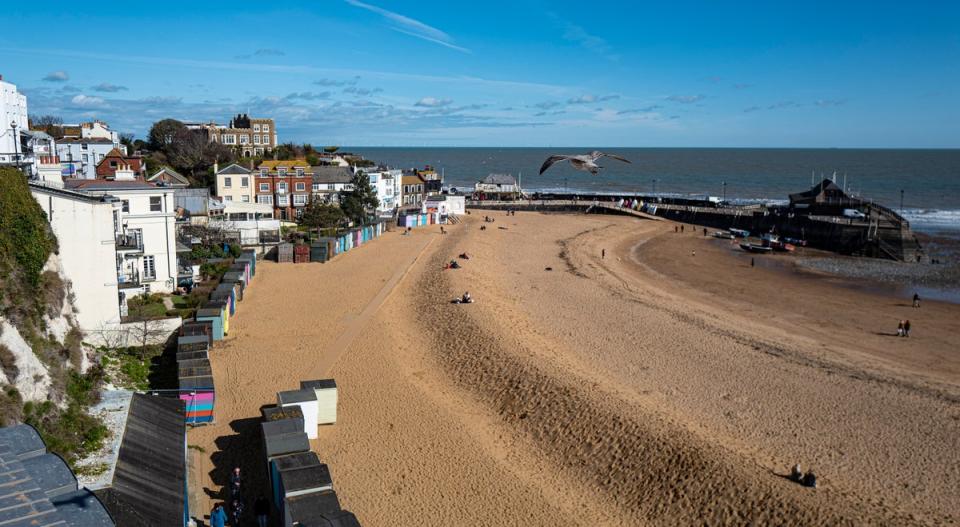
Ramsgate
Average property price: £222,000
A couple of miles down the coast from Broadstairs, Ramsgate was once a fashionable Victorian seaside resort, and although today’s holidaymakers have set their sights on more exotic climes, there is still a lot to recommend in this busy town, with its street cafes, charming marina, clifftop walks and blue flag sandy beaches.
Its history has left a legacy of streets of lovely Victorian and Regency townhouses, which to Londoners will seem ridiculously cheap — you could pick up an average flat for £152,000 or a house for £251,000. Trains from either Broadstairs or Ramsgate to St Pancras International take just under an hour and a quarter.
Sandwich
Average property price: £359,000
If you don’t mind a slightly longer journey, then pretty Sandwich, set on the River Stour, is a definite contender. It was one of Kent’s original Cinque Ports and the walled town centre still possesses plenty of medieval charm. There are two top-notch golf courses nearby and lots of bars and bistros to explore.
The nearest beach, Sandwich Bay, is narrow and gravelly but Pegwell Bay, near Ramsgate, is four miles up the road and is lovely. The commute to St Pancras International takes an hour and three-quarters.
Dungeness and Lydd
Average property price: £253,000
Kent’s coast is not all fish and chips on the sea wall and bucket and spade fun, though. Close to the Sussex border is Britain’s most extraordinary beach, Dungeness.
This endless expanse of shingles is lit by the glow of a nuclear power station and dotted with abandoned, rusting fishing boats and modest houses built from redundant 19th-century railway cottages.
It’s the kind of place you either fall madly in love with or hate.
Homes in “the village”, as the small cluster of houses on the shingles are known, rarely come up for sale. They are often bought as holiday homes by buyers who have replaced ramshackle cabins and bungalows with landmark modern houses. This collision of contemporary and crumbling is what gives the village its unique charm. A ramshackle Victorian rail carriage was renovated into the perfect seaside escape by one graphic designer featured in Homes & Property last year but, having relocated her main home from London to Cumbria, travel times have proved too tricky and it was listed for sale for £425,000.
A more practical option is Lydd, set on the edge of Romney Marsh, four miles from Dungeness. The commute involves a drive to Ashford, 17 miles away. From there you can be at St Pancras in 38 minutes.
Where to buy a home in Surrey
Although Surrey is the most expensive of the home counties, buyers who are willing to look beyond the classic dormitories like Guildford can find value on a (comparative) budget. As a plus, journeys to central London take about an hour.
Dorking
Average property price: £519,000
A terraced house typically costs £387,000 while a detached home will set you back £878,000.
Commuting: Just under an hour to Waterloo.
Dorking is one of Surrey’s gems, with a thriving town centre encircled by gorgeous countryside.
Property in Dorking ranges from period to brand new, and its town-centre shops are a good balance of useful and interesting. There are some great restaurants and cafes in town, notably Sorrel.
Just out of town the gorgeous views from Box Hill, immortalised by Jane Austen’s Emma, are almost worth the thigh-straining climb to enjoy them. On wet days there is still plenty to do, with a leisure centre and pool, cinema, theatre and annual music and arts festivals.
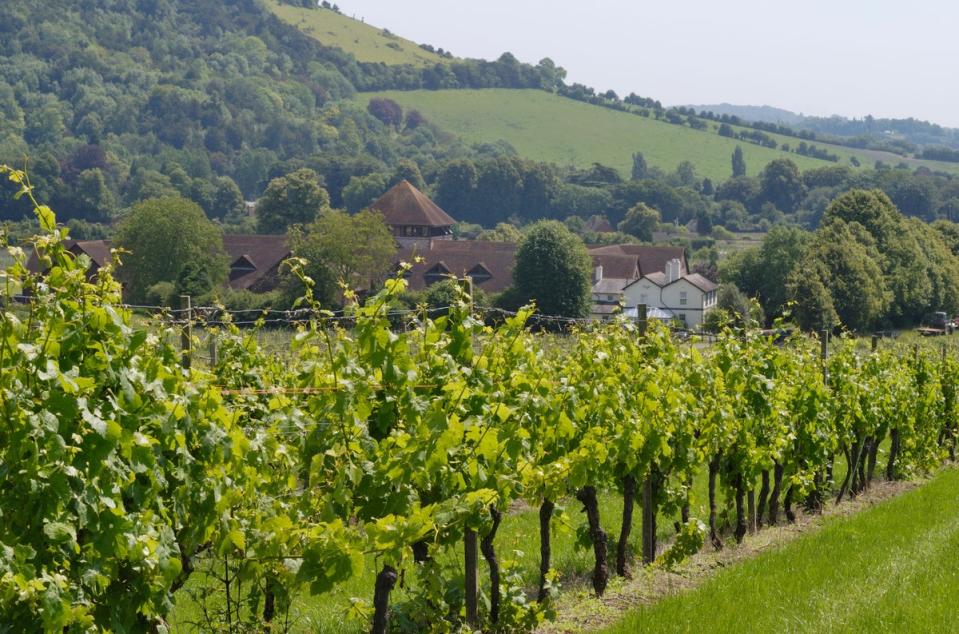
Godalming
Average property price: £491,000
A terrace costs about £396,000, and a detached house £761,000.
Commuting: From 46 minutes to Waterloo.
This country town passes the kerb-appeal test with flying colours: it is set beside the River Wey, with narrow windy little town-centre streets, pretty, traditional shops and just-so hanging baskets.
In the town you will find plenty of good gastropubs and being in the Surrey Hills means access to lovely walking and cycling country.
Haslemere
Average property price: £650,000
A typical terrace sells at £383,000 and a detached house for just over £1 million.
The commute: Around an hour to Waterloo.
This friendly little market town is right on the border of the Surrey Hills and the South Downs, so you get access to two areas of outstanding natural beauty for the price of one.
One major hassle to flag up about life in Haslemere is parking at the station for those who anticipate a return to the office post-pandemic. There is, at present, a three-year waiting list for a permit
Where to buy a home in Essex
Essex has some delightful options that are finding increased favour with priced-out Londoners.
Saffron Walden
Average property price: £421,000
With its award-winning market, beautiful, timber-framed cottages and great schools, Saffron Walden has long drawn exiting Londoners.
The medieval town centre is gorgeous to look at: packed with cute cafes, restaurants and independent boutiques. Make friends at one of the tennis clubs, work out at half a dozen gyms and enjoy plenty of long country walks exploring pretty villages within Saffron Walden’s hinterland.
You are also only 16 miles from Cambridge for day trips and nightlife while the journey to London (from Audley End Station) takes less than an hour. Stansted Airport is 13 miles away.
Timber-framed two to three-bedroom cottages in the town centre cost around £350,000 to £500,000. A four to five-bedroom post-war house a little further out might cost between £500,000 and £700,000. A bit of a shortage of larger period houses means, when they do come up, prices of around £800,000.
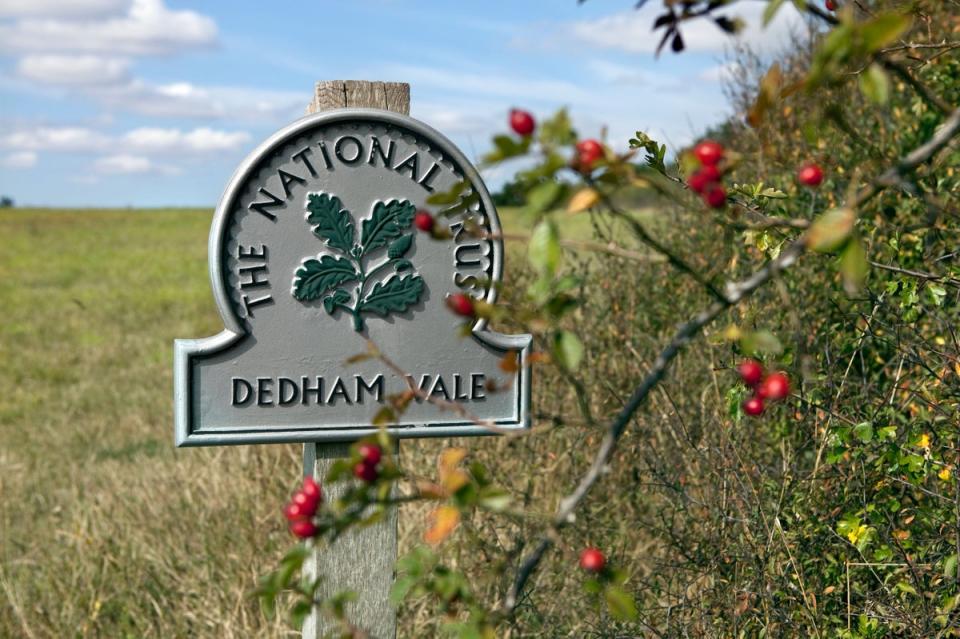
Dedham Vale
Average property price: £508,000
If your dreams of a new life involve a quintessentially pretty English country village then this Area of Outstanding Natural Beauty just north of Colchester is the ideal hunting ground.
On looks alone, the two loveliest villages have to be Dedham and Nayland. Dedham also has an Ofsted “outstanding” primary school, as does the village of Lawford.
Expect to pay £800,000 for a chocolate-box, four-bedroom detached cottage in one of these villages.
Another popular option for those not quite ready to dive into village life is the petite town of Manningtree, which is set on the estuary of the River Stour and is handy for the Suffolk coast.
Leigh-on-Sea
Average property price: £431,000
Just inland from the sandy beaches of Southend, arty Leigh-on-Sea has become hugely popular with families keen to leave London for the seaside but who don’t want to compromise on local amenities.
Word of mouth seems to have been behind Leigh’s resurgence and most who move down seem to have a ready-made support network.
Beyond the beach, Leigh has good transport links. Services to Fenchurch Street take from 48 minutes. Old Leigh is a pretty enclave of weatherboarded cottages, cobbled streets, bars and restaurants. There is a thriving arts scene in the town and an art trail (as well as a folk festival and regatta).
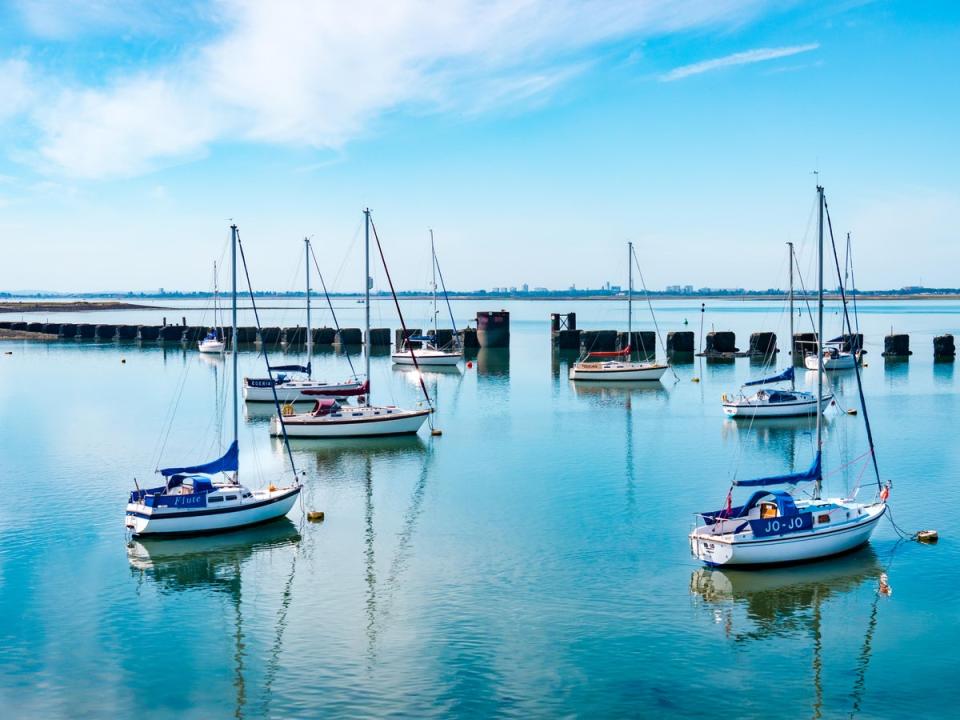
The island towns
Fancy the island life but can’t stray too far from London? Here are the capital’s best commuter isles.
Mersea Island, Essex
Average property price: £383,000
The commute: it is 10 miles from Mersea Island to Colchester. Regular bus services operate, although they do take around an hour and whether you bus it or go by car you will have to keep an eye on the tides because the Roman causeway that divides Mersea from the mainland floods at high tide. From Colchester you can get to Liverpool Street in just under an hour.
By ferry: a service runs across the River Colne to Brightlingsea Harbour, a journey that would otherwise be 19 miles by road.
Mersea Island is just off the east coast of Essex, linked to the mainland by a Roman causeway over The Strood. This floods at high tide, so residents need to work around it.
At just eight square miles, Mersea Island is certainly small but it is also rather perfectly formed with beautiful beaches, great sailing and some fabulous seafood restaurants.
The two main towns are East and West Mersea. East Mersea is a peaceful, residential spot with some of the island’s bigger, most expensive houses.
West Mersea, four miles away, is a busier, more touristy option with a high street, the main beach and plenty of cafes, restaurants, and pubs.
Houses are a total mash up — you might find a 12th-century timber-framed cottage, a Victorian terrace or a rather bland estate house. A budget of £300,000 is enough for a three-bedroom semi.
Isle of Sheppey, Kent
Average property price: £237,400
The commute: with a road link to the mainland and its own rail station, Sheppey is easy to get on and off. Trains from Queenborough Station to Blackfriars take from just under two hours.
By ferry: no regular commuter services but Jetstream Tours does regular day trips to Southend.
This 36-square-mile island is set just off Kent’s north coast, separated from the mainland by The Swale.
Its main town is Sheerness, once used by the Royal Navy as a dockyard and now a slightly dispirited commercial port. But the east side of the island is a whole different story, with pretty seaside towns such as Leysdown-On-Sea and Minster on Sea, beaches and nature reserves.
It’s a good choice for outdoorsy types: you could relax at the lovely beaches at Leysdown-On-Sea or Minster, explore the Elmley Marshes, and its tourist trade means there is a good choice of pubs and cafes.
For everything else a trip to Sittingbourne, just on the other side of The Swale, or beautiful Faversham, is quick and painless.
One red flag here is schools. Sheppey has a choice of primaries, the majority rated “good” by Ofsted. But the only secondary on the island “requires improvement” according to the schools watchdog.
Hayling Island, Hampshire
Average property price: £372,000
The commute: Havant Station is a two-mile walk or cycle from the island. From there you can travel to Waterloo in around an hour and a half.
By ferry: Hayling Ferry offers trips across the short stretch of water to Portsea Island, Portsmouth — saving a 15-mile journey by road.
Just off the Hampshire coast, Hayling is easy to get around – it’s about four miles from coast to coast. Its beach is a mix of sand and shingle.
Pre-Covid, Hayling Island was one of those places considered just a bit too far for London commuters, but the pandemic has changed all that.
The island’s population doubles in summer as tourists arrive en masse, which can lead to big queues to get on or off the island, but locals tend to simply avoid peak times. And they have useful shops on their doorstep, plus country pubs dotted all over the place.
There are also three primary schools on Hayling, all with “good” Ofsted reports, plus a senior school also considered “good”.

 Yahoo News
Yahoo News 